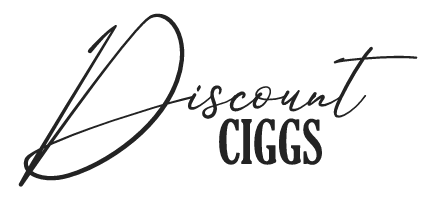Tobacco Excise Taxes in Canada: Health, Economics, and Controversy
Diving into a subject that has generated considerable debate, we confront the matter of tobacco excise taxes in Canada. This issue stands at an intersection of public health and individual financial concerns. While many champion these taxes as a strategic step towards cultivating a healthier Canadian population, aiming to deter harmful tobacco consumption, there's a contrasting perspective that views it as an economic burden. For this group, the financial implications of these levies are felt deeply, often perceived as an unwelcome strain on personal budgecheap cigarettes ts. Hence, what one side sees as a commendable public health initiative, the other experiences as a palpable financial pinch.
A Brief History of Tobacco Excise Taxes in Canada
The Origin of Tobacco Taxes Take a moment to journey back in time, to an era where governments worldwide, including Canada's, were experimenting with various methods to control and regulate the habits of their citizens. One such method that gained significant traction was the use of taxation as a regulatory tool. By manipulating the cost of goods through taxation, governments aimed to steer public consumption in a direction they deemed favorable or safer for the community. Among the multitude of products that found themselves under the government's scrutinizing gaze, tobacco emerged as a prime candidate for this fiscal strategy, primarily due to the mounting evidence of its detrimental health impacts.
The rationale behind targeting tobacco with a hefty tax was twofold. Firstly, there was an undeniable link between tobacco consumption and a slew of health complications. By the time the tax initiative was being considered, countless studies had already illuminated the perils of smoking, ranging from respiratory issues to life-threatening diseases like cancer. It was evident that tobacco was not just an individual's vice but a broader public health concern. Therefore, governments, including the Canadian ones, felt a moral and social responsibility to intervene. The second, and perhaps more pragmatic reason, was the belief in the elasticity of demand. The governing bodies surmised that if tobacco products were made more expensive through higher taxation, consumers might hesitate before purchasing. The increased cost would, ideally, serve as a deterrent, making individuals reconsider their choices and potentially dissuading new smokers from picking up the habit.
The underlying premise of this strategy was straightforward: leverage the power of the pocketbook to influence behavior. If smoking became a costly endeavor, perhaps many would think twice before investing in a packet of cheap cigarettes. The Canadian government, in alignment with this logic, hoped to achieve a dual objective. On the surface, it was about reducing the prevalence of smoking and, by extension, the health risks associated with it. But on a deeper level, it was also about reshaping societal perspectives on tobacco, transforming it from a casual, affordable indulgence into a luxury or a choice that came with significant financial implications. As with any policy, the effectiveness of this taxation strategy varied among individuals and demographics. While some might have been dissuaded by the price hike, others might have continued unabated. Nevertheless, the initiative underscored the lengths to which governments, like Canada's, were willing to go to safeguard the health and well-being of their citizenry. In an intricate dance of economics and public health, taxation emerged as a potent tool in the arsenal against tobacco consumption.
The Gradual Increase and Its Rationale Throughout the years, there's been a noticeable trend in the realm of taxation, particularly concerning specific consumer goods. Taxes on certain items haven’t merely remained consistent; they've seen a marked increase. One might wonder about the motivations behind such decisions. Delving into the matter reveals that governments across the world saw an intertwined advantage in upping these taxes, especially on products like tobacco. Health experts and advocates have long been sounding alarms about the dangers of smoking. Their perspective on this tax increase was largely positive; they postulated that by making these products more expensive, potential new users might be dissuaded from picking up the habit. Additionally, the higher price tag could serve as a nudge for existing smokers to reconsider their choices and possibly move towards quitting.
From an economic viewpoint, the implications of these tax hikes are also significant. Governments, always on the lookout for ways to bolster their revenue streams, identified this as a promising avenue. Raising taxes on goods deemed harmful by health experts killed two birds with one stone. On the one hand, it potentially reduced consumption, aligning with public health objectives. On the other, it promised to bring in a sizable chunk of revenue to the state's treasury. Every purchase, despite its increased price, would contribute more to the government's coffers than before. This revenue could then be channeled into various sectors, possibly even into healthcare, to address the very issues caused by such products. The debate on this matter is multifaceted, but the rationale from the government's side appears to be clear: marrying health objectives with economic gains.
Economic Implications for the Canadian Government
Revenue Generation There's little doubt about it; the taxes levied on tobacco products have become a significant source of revenue. Every single pack of cigarettes sold contributes financially to public coffers. This revenue stream, at least in its intended purpose, holds the potential to be channeled back into society. The funds can be earmarked for healthcare initiatives or perhaps even for programs designed to educate the public on the detrimental health effects associated with smoking.
It's a dynamic that presents both an opportunity and a responsibility for governments. On the one hand, the financial windfall from these taxes can provide a much-needed boost to public health and awareness initiatives. But on the other, it's essential that these funds are used judiciously and transparently. The public deserves to see that the money they contribute, indirectly through purchasing tobacco products, is reinvested in ways that might eventually reduce the very health risks those products present. It's a cycle of revenue generation and health-conscious reinvestment that, if managed effectively, can benefit society as a whole.
Balancing Health Concerns with Economic Needs Navigating the issue of tobacco sales presents a delicate balancing act. On one side of the spectrum, the health advantages of curtailing smoking are clear and undeniable. Fewer smokers mean a reduction in health-related complications, leading to longer lifespans and enhanced quality of life for many individuals. Such improvements in public health can even translate to fewer burdens on the healthcare system in the long run. The narrative of health benefits isn't just limited to the smokers themselves, but also to the broader community, with reduced passive smoke exposure and decreased strain on public health resources.
On the flip side, the financial allure of tobacco sales is hard to overlook. The tobacco trade often brings in substantial revenue, which many governments rely upon to fund essential services or infrastructure projects. These immediate economic inflows can be enticing, especially in regions where tobacco production and sales form a significant chunk of the local economy. Consequently, the decision-making process becomes a challenging endeavor. The dilemma revolves around choosing between immediate fiscal advantages and broader, long-term health benefits for the population. Governments and policymakers are constantly tasked with weighing these competing interests, aiming to find a middle ground that prioritizes the well-being of their citizens while also recognizing the economic realities they face.
Direct Impact on Canadian Smokers
Altering Consumption Patterns Across the societal spectrum, varied reactions emerge as individuals face new circumstances, especially when it comes to price fluctuations in daily commodities or habits. This phenomenon isn't exclusive to any particular demographic; rather, it paints a picture of diverse human behavior, revealing a multitude of coping mechanisms. Joe and Joanne, representing the everyman and everywoman, exhibit these varied responses in intriguing ways, reflecting broader patterns seen in communities worldwide.
For a significant portion of the population, the financial and health implications are paramount. As cigarette prices in Canada soar, they are prompted to re-evaluate their priorities and make adjustments accordingly. Many have chosen to cut down on their consumption, driven by a combination of budgetary constraints and heightened health consciousness. These individuals view the situation as an opportune moment to reassess their lifestyles, recalibrating their choices to achieve a better balance. By cutting down, they hope not only to save money but also to foster a healthier approach to life, signaling a proactive stance in response to external challenges.
Yet, not everyone opts for this path of moderation. There are those who, resistant to change or driven by addiction, seek alternative avenues to sustain their habits. This pursuit sometimes leads them to cheaper, albeit potentially illicit, sources. These individuals often venture into the gray areas of commerce, willing to risk potential legal ramifications to procure what they desire without feeling the weight of the price hikes. Their determination underscores the depth of their commitment (or dependency) and highlights the lengths to which some will go to maintain their routines.
Lastly, there exists a segment of the population seemingly impervious to these external changes. Regardless of escalating prices, they remain steadfast in their consumption patterns. This group is characterized by a certain resilience or perhaps even indifference. For them, price hikes are mere inconveniences, unable to deter them from their established habits. Whether this persistence stems from deep pockets, a nonchalant attitude, or sheer determination, it's evident that they are unperturbed by external factors, choosing instead to stay the course they've always known. This array of responses, from adaptation to persistence, offers a fascinating glimpse into human behavior in the face of change.
The Drive Towards Alternate Products Over recent years, there has been a marked shift in consumer preferences when it comes to smoking. Many individuals are gravitating towards newer alternatives, with vaping leading the charge as the most popular choice. This paradigm shift is not entirely surprising, given the rigorous advertising and widespread perception that vaping is a "safer" alternative to conventional smoking. The appeal of electronic cigarettes and vape pens, often complemented by an array of flavors and customizability, is hard to resist for many, especially for those seeking a departure from traditional tobacco products. The modern aesthetics of vaping devices, coupled with their tech-driven functionalities, further fuel this growing intrigue among users, both old and new.
However, the narrative of vaping as a safe alternative isn't without its controversies. Medical professionals, researchers, and public health experts are still in the midst of rigorous debates and studies to understand the long-term health effects of vaping. Preliminary findings suggest that while vaping might eliminate some of the harmful effects associated with the combustion of native cigarettes, it introduces its own set of health concerns. Issues like the impact of inhaling flavored vapors, the chemical composition of e-liquids, and potential respiratory concerns remain areas of active exploration. As the vaping industry is relatively new, long-term studies are still in their infancy, making it crucial for consumers to stay informed and cautious.
Yet, the allure of vaping isn't solely rooted in its perceived safety or modern appeal. The economic landscape of traditional tobacco products plays a significant role in this shift. Over the past decades, the costs associated with purchasing traditional cigarettes have surged, often due to increased taxes, stringent regulations, and the global push towards a tobacco-free world. This rising cost has, undoubtedly, made many traditional smokers reconsider their choices and explore more cost-effective alternatives. Vaping, for now, seems to offer that economical reprieve, along with the added allure of modernity and a promise of reduced harm. As consumers navigate this evolving landscape, it remains paramount to prioritize health and make informed decisions, always keeping abreast of the latest research and findings.
Socio-economic Impact on Communities
Reduced Health Burden There's a silver lining when we consider the potential impact of higher tobacco prices on public health. As the cost of smoking rises, it could deter many individuals from picking up or continuing the habit. The immediate implication of this trend is a healthier populace. Fewer smokers translate to fewer individuals being susceptible to diseases and conditions directly linked to tobacco use, which in turn means a significant reduction in the number of smoking-related ailments.
This ripple effect is not just limited to individual well-being. Our health institutions, which are often stretched thin dealing with various health crises, stand to gain immensely. Hospitals and clinics would experience less strain from having to treat fewer cases of smoking-induced diseases. Consequently, resources can be redirected to address other pressing health concerns or further improve healthcare services. In essence, by simply raising the prices of tobacco, we might be paving the way for a healthier community and a more efficient healthcare system—a beneficial scenario for all involved.
Potential for Increased Illegal Trade On one hand, imposing high taxes might seem like a beneficial strategy. However, there's an unintended consequence to consider. Elevating the cost of cigarettes through taxation can drive smokers to seek alternatives in the black market. Such a shift does not only lead to potential revenue losses for the government but also ushers in a plethora of uncertainties.
When smokers turn to the black market for their supplies, they expose themselves to unregulated products whose quality and safety cannot be vouched for. Without the standards and checks in place that regulated products undergo, consumers are at risk of purchasing potentially harmful products. This situation not only undermines governmental revenue streams but also jeopardizes public health.
Smokers’ Perspective: Is It Fair?
The Morality Debate Through the eyes of a smoker, the rising taxes often appear as an undue burden. Many smokers perceive this as a judgment on their personal choices, labeling it a "sin tax." They feel singled out and subjected to a unique form of financial punishment due to their habits.
The ethical conundrum arises when one ponders the rationale behind taxing a legal product so heavily. Is it right to impose such high levies, especially on a product as addictive as tobacco? Many argue that individuals should not be penalized disproportionately for making a choice that, while potentially harmful, remains within the bounds of the law.
Impact on the Vulnerable Demographic The crux of the matter lies in the fact that individuals most impacted by these taxes typically hail from lower socio-economic brackets. For these individuals, the weight of such financial impositions is not just nominal but can be disproportionately heavy, deepening the financial hardships they already grapple with. This nuanced perspective underscores the fact that policies, even when crafted with the best intentions, can sometimes have unintended consequences, disproportionately affecting those they weren't necessarily aimed at, and in this case, exacerbating economic disparities.
Conclusion
Tobacco excise taxes in Canada undeniably serve as a convergence point for a myriad of issues, spanning economics, public health, and individual liberties. The noble underpinnings behind such taxes, which aim to protect public health, can't be denied, but their reverberating consequences paint a complex picture. The range and depth of these implications stretch far and wide, affecting pockets, health, and personal choices in unanticipated ways. Amidst this intricate landscape, one element remains undebatable: the fervor and intensity surrounding discussions on these taxes are as impassioned as the glowing ember of a newly ignited cigarette.
FAQs
Why were tobacco excise taxes introduced in Canada?
To regulate tobacco consumption by making it costlier, aiming to deter potential smokers and reduce overall tobacco use.
How do these taxes benefit the Canadian government?
They serve as a significant revenue source, which can potentially be funneled back into health care and public awareness campaigns.
Has the increase in tobacco taxes led to reduced smoking?
While some smokers have cut down or quit due to the price hikes, others have turned to cheaper or illicit sources.
What's the downside of high tobacco taxes?
There's potential for increased illegal trade, which raises concerns about the quality and safety of unregulated products.
Is there a notable shift towards alternate smoking products?
Yes, with the rise in traditional cigarette costs, many smokers are exploring alternatives like vaping.
References
- Canada Border Services Agency: cbsa-asfc.gc.ca
- Tobacco Tactics: tobaccotactics.org
- Canadian Society for Epidemiology and Biostatistics (Tobacco section): www.cseb.ca



